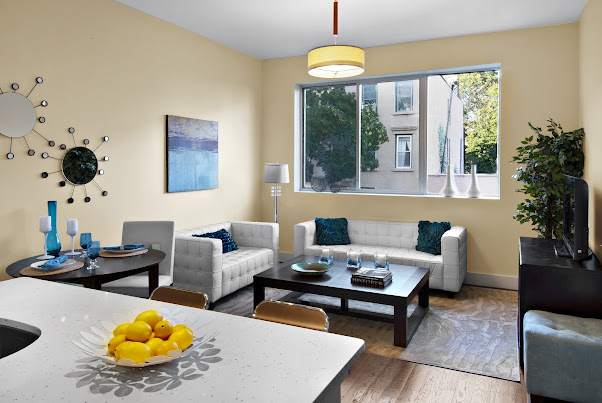A healthy home can be a goal for many homeowners. The problem is, it's not always easy to achieve. Some people don't know where to start when it comes to making changes to their homes, and others have tried and failed before, either because they don't know how to do it or because they're dealing with other factors like budget constraints.Â
But no matter what kind of obstacles your project may face, Top interior designers suggest some simple tricks that can help you get started on the right foot—even if you're new to interior design!
In this post, we'll be looking at some common ways people approach their own projects and give some basic tips on how you can do things better. You won't believe how much better your life will be once your house is liveable again!
Incorporate warm hues into your space
Warm hues are red, orange and yellow. They can be used to add colour to any room and make it look more inviting. They're good for rooms with low lighting because they'll help you see better in the dark. Warm colours are also great for spaces that have high ceilings because they make them seem lower than they actually are.
Choose a colour palette that fits your personality and lifestyle
When it comes to interior design, colour is king. The right colour palette can make a space feel calm and serene or warm and inviting. However, interior designers suggest that its important to consider how your choices will affect the mood of those who visit your home by way of their feelings toward you. When choosing paint colours or wallpapers, keep these tips in mind:
- Choose colours that reflect your personality and lifestyle -- If you're a loud person who loves bright colours, go for it! Just be sure they're appropriate for where they'll be used (for example, if all the walls are going to have dark wood panelling).
- Use appropriate hues for each room -- For example, bedrooms should usually be lighter than living rooms because people spend more time sleeping there than relaxing at night watching TV on couches while wearing pyjamas!
- Avoid clashing hues whenever possible -- While this isn't always easy when working with limited options due to budget constraints or limited availability within certain neighbourhoods; instead just focus on creating harmony between different types/colours within each room rather than trying find exact matches between each piece individually (this rule applies equally well both inside AND outside).
Balance the use of light and dark colours throughout your home
When it comes to choosing colours for your home, you have a few options. Darker shades can be used to create a cosy atmosphere and make a room look more spacious, but they also make the space feel smaller. Light colours are best suited for rooms with high ceilings or small spaces because they'll help the room appear larger than it actually is.
If you're hoping to make your living room seem more spacious, use light or neutral tones like white or grey throughout the space--this creates an airy feeling that instantly makes even small rooms appear bigger. If you'd rather create an intimate ambience in your dining area, opt for rich hues such as burgundy or navy blue; these deep tones will give off an elegant appearance while making them feel cosier than ever before!
Choose furniture that can be used for many purposes
When you're choosing furniture for your home, look for items that can be used for many purposes. If you have a lot of people coming over and need extra seating, try using an ottoman or bench as an extra chair. Interior designers said that it could also use these pieces as tables in the living room or bedroom if you don't have enough space on your coffee table or nightstands.
If you want to make sure that the furniture in your house is multifunctional, look at how they are designed before purchasing them. For example: if there are compartments built into chairs or ottomans (like drawers), then this means they can double as storage units when not being used as seating!
Use textures to add interest to a room
Textures are a great way to add interest to a room. They can be used as a focal point, to create a mood or atmosphere and even as an accent piece.
The texture is one of the most important elements in interior design because it adds depth and dimensionality, which makes any space feel more welcoming. Texture also creates visual interest by breaking up patterns so that the eye doesn't get tired looking at everything on the wall or floor all at once--which is especially important if you have kids running around who won't sit still long enough for you to admire all of your hard work!
Conclusion
Of course, interior design is a skill that takes years of practice to perfect. But if you're looking for some tips on how to get started with your own home decorating project, these are some great places to start!
Source Url: https://furnishddesign.blogspot.com/2023/03/the-secret-to-healthy-home-interior.html
